PowerShot D10 is the perfect camera to take with you when you go off to school. It can help you capture all the memories of your school years.Canon PowerShot D10 has a 12.1-megapixel sensor . It is also equipped with an optical image stabilizer , unusual for a camera in its class. It is packed with features face recognition and scene…….
Long-awaited Canon in the niche of digital compact submersible . in the niche The wait was worth it. The wait was worth it. If it meets the requirements of an aircraft of this type by providing a seal to a depth of 10 meters and resisting falling 1.2m PowerShot D10 has a more fun look . If it meets the an aircraft this by providing seal to depth 10 and resisting fun look. Beautifully rounded , it has many more buttons to set your shots . Beautifully rounded, set your shots. Nevertheless, his grip is not always the easiest , the fault of the corners of the unit slightly prominent . Nevertheless, his not always easiest, fault of of slightly prominent.
The 12.1-megapixel Canon D10, while similar to those two cameras, still manages to stand out in the crowd. The Olympus 8000 and Panasonic TS1 are both very rectangular, sleek-looking ultracompacts. They’re so slick that you might not guess that they’re capable of plunging underwater or resisting damage from dust and dirt. The Canon D10, however, goes in the opposite direction. Its unique appearance is meant to clearly convey its purpose and strengths, and also to appeal to a more family-oriented audience. The Canon D10 isn’t just about endurance in the way the TS1 and TOUGH 8000 are; it’s about fun. It’s about not having to worry about your camera so you can freely enjoy the sand and the waves.
The Canon Powershot D10 is a very thick, bulbous camera. It has a very rounded body that is secured by several visible bolts. The lens itself is encased in a tightly-sealed enclosure, ensuring that no dust or debris can get in there and scratch it. The lens does not extend outside of the body of the camera; in essence, the D10 is preemptively encased in an underwater housing that cannot be removed.
The D10 claims to be waterproof to a depth of 33 feet. That’s not enough for a SCUBA dive, but plenty if you’re playing in the surf, snorking, or having fun in a pool. It’s also shockproof from a height of four feet. That means you can knock the D10 off of a table or out of a bag and expect it to survive without serious problems. Dropping it from eye-height (5 to 6 feet) probably won’t kill the D10 (manufacturers tend to build in a buffer to these ratings), but the likelihood of damage is definitely increased
Furthermore, it’s important to remember that if you drop the camera, even if the internal mechanisms survive, the waterproof housing could be cracked or damaged. Thoroughly check the body of the camera after any serious drops before you decide to take it underwater.With its durable, waterproof, dust/sand-resistant design, the D10 is ready to take on beaches and other vacation destinations that would otherwise spell doom for traditional, unprotected digital cameras.
As mentioned, the design of the D10 is a little unusual. It’s oddly shaped, almost like an egg. Every aspect of the camera’s layout and design keeps the camera’s intended use in mind, for better or for worseNowhere is this clearer than with the buttons. The buttons on the camera’s top and back are crafted to not allow any water or debris inside, which means they are very thick and fit tightly in their seats. This snug fit often makes for a frustrating experience, as buttons can get stuck or put up more resistance than the shooter is expecting. It’s most noticeable on the shutter button, as it can sometimes interfere with snapping a photo. A minor quibble, but worth noting.
The D10’s battery door has a similar issue. It’s secured with a thick, rubberized gasket to keep water out, which is great. Opening it can be very difficult, however. Not that you’ll need to open it very often. Certainly it’s better to have greater security from water than it is to have an easy door release.On each of the D10’s four corners, users will find a large, circular clip for the camera’s lanyard. The lanyard has a big, rounded peg that sits in these clips and, when turned clockwise, locks into place. It’s a clever bit of engineering, though it’s not clear why it’s more advantageous than the simple knot method of securing a lanyard or strap to a digital camera. In any case, once the lanyard is locked in, it’s not coming out. Then it’s up to you to keep your hand on it underwater.
The Canon D10 has a 12.1-megapixel sensor and 3x optical zoom lens, making it fairly average compared to its peers. For a camera of this size and bulk, one would probably expect a longer zoom, however it’s clearly been sacrificed for the durable body. The Panasonic TS1 has a 4.6x zoom, and the Olympus 8000 has a 3.6x lens.The D10 is fairly limited in what it can do. It’s not intended to accept subtle refinements or modifications, it’s a primarily automatic digital camera meant for shooters who don’t want to concern themselves with minutiae. It has only four modes: auto, program AE, scene, and movie.
The auto mode is “intelligent,” meaning it will automatically adjust settings to accommodate the environment it detects. Program AE lets shooters make simple adjustments to focus, flash, brightness, and light sensitivity. Scene mode includes a selection of presets to be used at night, on the beach, or indoors.Despite some softness in our test photos, they were generally good. Canon has a knack for making good cameras with consistent performance, and the D10’s photos are satisfying. It’s not the highest-quality camera I’ve ever tested, but it’s good enough, especially considering that it’s meant to take such photos under unprecedented levels of abuse.
Specifications
- 12.1 megapixels
- 3x optical zoom / 4x digital zoom
- Face detection auto focus
- Waterproof to 33 feet
- Shockproof to 4 feet
- Movie mode with sound (Max length 1 hour / 4GB)
- JPEG file format
- Lens-shift image stabilization
- ISO 80-1600
- 2.5-inch LCD Display
- Secure Digital memory card storage
- Lithium-ion battery
What’s hot:
- Good image quality with good color accuracy and overall sharpness
- Solid construction (sturdy, waterproof, shockproof, freezeproof); huge buttons for easy operation
- Design is appealing to kids and anyone fond of ‘cute’ things; four on-board connectors for attachments
- Good LCD visibility in variety of conditions
- Fast in terms of performance (except continuous shooting)
- Decent point-and-shoot feature set with ample scene modes (two ‘manual controls below are a plus)
- Manual focus is a handy feature to have; Long shutter mode allows for selection of slow shutter speeds (above 1 second)
- Playback editing tools include redeye removal and iContrast (brighten images)
What’s not:
- Noise reduction smudging from ISO 400 onwards; slight color fringing
- Bulky size (compared to other rugged cameras); camera doesn’t fit in pockets
- 3X lens doesn’t go very wide (starts at 35 mm); least zoom among rugged cameras
- Sluggish continuous shooting frame rate
- Camera doesn’t include any lens cap/cover
- Lacks manual exposure controls and a live histogram
of pictures is quite satisfactory . The quality satisfactory. It produces sharp pictures , well exposed with beautiful colors. sharp pictures, well exposed with beautiful colors. So the Canon PowerShot a compact ideal for student divers .
As a digital camera, the D10 performs fine. As a waterproof, shockproof digital camera, it’s very good. Is it the best waterproof, shockproof model out there right now? If I had to choose, I’d probably still go with the Panasonic TS1. However, the cuteness and simplicity of the D10 would make it a great choice for families heading out on vacation, especially if they’d like to hand off the camera to the kids every once in a while without worrying that it’s going to get broken.
Resources :digitalcamera-hq.com,cnetfrance.fr,dpinterface.com

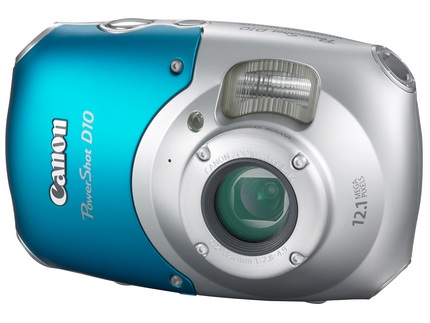
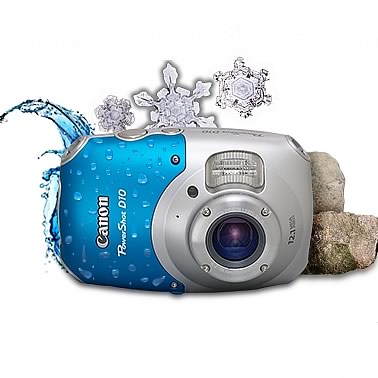
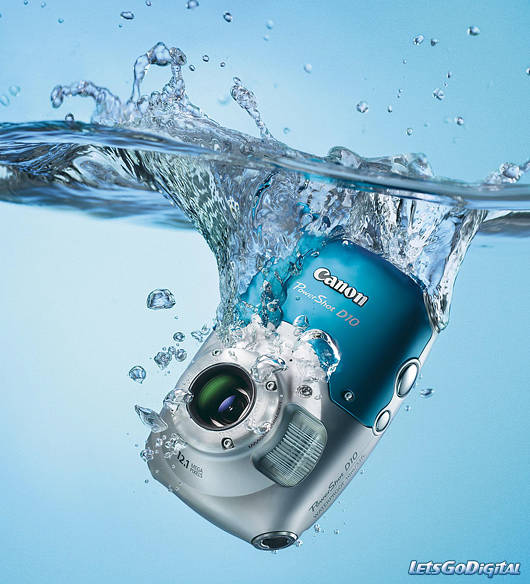
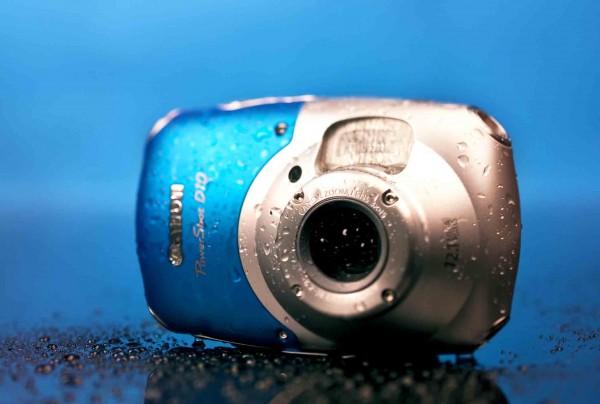
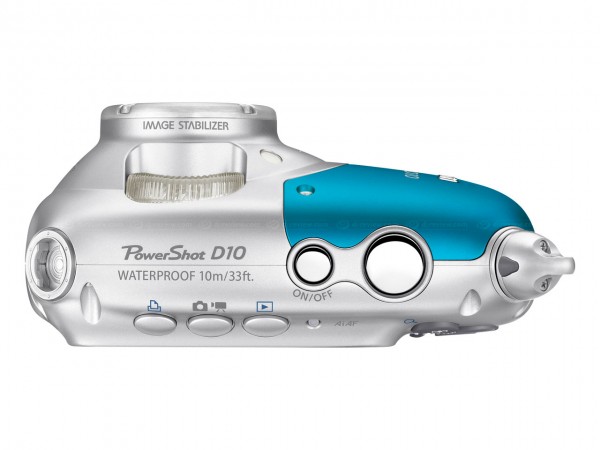
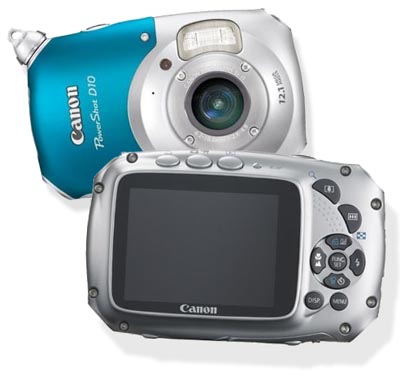
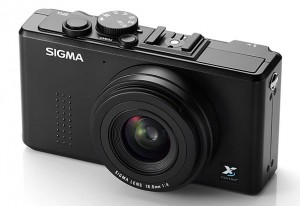
Canon Powershot D10 camera looks to be good for both play and work in the water. What strikes me is its ability to withstand exposure to saltwater, which has always been an issue for electrical devices. The decent optical quality is also a selling point. I am always careful to soak the camera in fresh water when come back from my sea diving as described in manual.
This is to get any potential salt deposits off the camera.
http://www.digitaldesires.net/canon-powershot-d10-a-bubble-body-camera.html
Canon Powershot D10 camera looks to be good for both play and work in the water. What strikes me is its ability to withstand exposure to saltwater, which has always been an issue for electrical devices. The decent optical quality is also a selling point. I am always careful to soak the camera in fresh water when come back from my sea diving as described in manual.
This is to get any potential salt deposits off the camera.
http://www.digitaldesires.net/canon-powershot-d10-a-bubble-body-camera.html